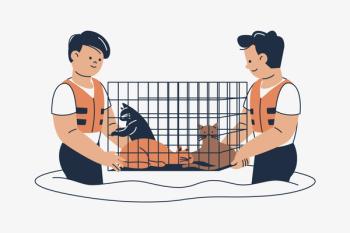
GAO: Horses are worse off since closure of domestic slaughter operations, veterinarians say
National Report -- Equine welfare in the United States has generally declined since domestic equine slaughter was banned, according to a new report by the Government Accountability Office (GAO).
National Report
—Equine welfare in the United States has generally declined since domestic equine slaughter was banned, according to a new report by the Government Accountability Office (GAO).
“The prohibition on the use of funds for required inspections has, in effect, banned the slaughter of horses for food in the United States, and, as a consequence, moved this slaughter to other countries where the United States Department of Agriculture (USDA) lacks jurisdiction and where the Humane Methods of Slaughter Act does not apply,” the report states. “Therefore, USDA is less able to ensure the welfare of horses at slaughter. And, as was the case with horses in transit to slaughter, APHIS officials speculated that compliance with the transport regulation has suffered because shippers are aware that the program can no longer leverage the assistance of USDA personnel in slaughtering facilities to ensure the completion of paperwork or note the condition of individual horses in a shipment.”
Horses now travel at least 200 miles further to slaughter than they did when domestic facilities were operating. The number of horses purchased for slaughter has not decreased since the closure of domestic slaughter operations, the report notes, but from 2006 to 2010, horse exports for slaughter to Canada and Mexico increased by 148 and 660 percent, respectively.
Government agencies and 17 state veterinarians were among those interviewed for the report. While there are few hard numbers on horse abandonment, neglect and abuse, the consensus was clear.
“Without exception, these officials reported that horse welfare has generally declined, as evidenced by a reported increase in cases of horse abandonment and neglect,” the report states.
Abuse in most cases is not direct or planned, the report notes, but a result of the lower horse prices caused by cessation of domestic slaughter and the economic downturn. Lower horse prices—a decline of 8 to 21 percent depending on the category of horse —have made it more difficult for owners facing economic hardship to sell horses, and humane groups are already at capacity for taking on new rescues, GAO says.
To compound the problem, the report says, regulators who once inspected horse slaughter facilities are not permitted to inspect any horses destined for slaughter.
Also, $100,000 in funding cuts over the last five years has withered the USDA program for horse transport, which now has only two staff members to monitor compliance of equine transportation regulations.
There isn’t even a clear picture of how many horses are crossing the borders into Canada and Mexico for slaughter, since USDA depends on numbers from regulators in both those countries for the tally, GAO says. Even so, those reports have been inconsistent.GAO contends that as of March 2011 USDA had not received any horse shipping certificates from Texas border crossings in more than a year, even though the majority of horses bound for Mexico pass through the state.
See the August issue of
DVM Newsmagazine
for a full analysis of the report.
Newsletter
From exam room tips to practice management insights, get trusted veterinary news delivered straight to your inbox—subscribe to dvm360.






